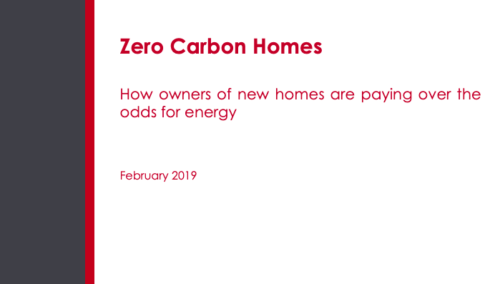Zero Carbon Homes
How owners of new homes are paying over the odds for energy
Last updated:
The cost of keeping homes warm is the largest component of domestic energy bills, and represents the greatest challenge to fuel-poor households during the winter months. Maintaining comfortable temperatures at home is predominantly done by burning natural gas, a high-carbon fuel on which the UK is becoming increasingly import-dependent.
The easiest way to reduce the cost of heating homes is to increase building efficiency. By ensuring that less heat is wasted through windows, walls and roofs, less fuel needs to be burnt.
However, the UK is currently without a wide-reaching domestic energy efficiency scheme, and as such, carbon emissions from UK homes have risen slightly over the past two years.
This need not be the case. First devised in 2007, the Zero Carbon Homes policy would have required that new-build homes did not result in the net release of any carbon dioxide into the atmosphere during day-to-day running. This was to be achieved through a combination of reduced energy demand, generation of heat and power from onsite low-carbon energy sources, and abatement measures (such as planting trees) to offset emissions that could not be avoided.
The Zero Carbon Homes policy was set to be implemented from 2016, with all new homes built in England after the beginning of the year subject to new, tighter standards. Yet, despite the building industry having had nearly a decade to prepare, it was cancelled by then-Chancellor George Osborne just a few months before implementation.
This report finds that had the policy not been cancelled, occupants of new homes built since 2016 would be saving up to £200 per year on their energy bills, close to triple the average saving intended to result from the Government’s recently-introduced energy price cap.
To download the report, click here.
This report was updated in March 2019 to correct for errors in the underlying data
